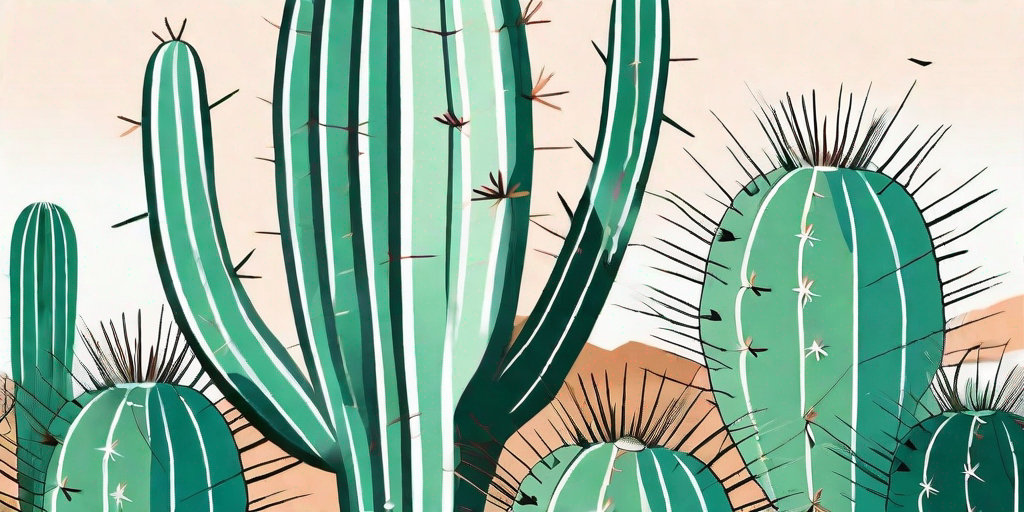
If you've ever found yourself staring at a cactus, pondering the mysteries of life, and wondering, "What's the deal with those seeds?" then you're in the right place. We're about to embark on a prickly journey into the world of cactus seeds, uncovering their spiky secrets and revealing the truth about these desert dwellers. So, buckle up, plant enthusiasts, it's time to get our hands dirty (metaphorically, of course).
The Life Cycle of a Cactus Seed
From Flower to Fruit
It all begins with a flower. Yes, you heard it right. Those spiky, intimidating cacti actually produce flowers, and quite beautiful ones at that. These flowers, in their quest for love and pollination, attract various insects and birds. Once pollinated, the flower transforms into a fruit, which houses our protagonist, the cactus seed.
Now, you might be thinking, "A cactus producing fruit? That's bananas!" Well, not quite. These fruits are often small and round, and while they might not make it into your next fruit salad, they're a crucial part of the cactus life cycle.
The Journey of a Seed
Once the fruit ripens, it bursts open, releasing the seeds into the world. These seeds, tiny and unassuming, are about to embark on a journey of survival. They must endure harsh desert conditions, avoid being eaten by animals, and find the perfect spot to germinate and grow.
It's a tough life for a cactus seed, but hey, nobody said being a plant was easy. Especially not in the desert.
How to Grow a Cactus from Seed
Step 1: Gathering the Seeds
First things first, you'll need some cactus seeds. You can either collect these from a mature cactus fruit or purchase them from a reputable seed supplier. Remember, quality matters. The better the seed, the higher the chance of successful germination.
Once you have your seeds, it's time to get planting. But before you start digging holes in your backyard, let's go over the proper way to plant a cactus seed.
Step 2: Planting the Seeds
Start by filling a shallow container with a well-draining soil mix. Cactus seeds aren't fans of soggy soil, so make sure your mix is light and airy. Sprinkle the seeds on top of the soil and lightly cover them with a thin layer of sand or grit.
Next, place the container in a warm, sunny spot and keep the soil slightly moist. Patience is key here. Cactus seeds can take anywhere from a few weeks to several months to germinate, so don't lose hope if you don't see sprouts right away.
Step 3: Caring for Your Baby Cactus
Once your seeds have sprouted, it's time to celebrate! You're now the proud parent of a baby cactus. But don't pop the champagne just yet. Your job isn't over. Baby cacti need plenty of light, but not direct sunlight, as it can burn their delicate skin. They also need regular watering, but remember, less is more when it comes to watering cacti.
As your cactus grows, you'll need to repot it into a larger container. This is also a good time to start introducing it to more sunlight. With proper care and a bit of luck, your baby cactus will grow into a strong, mature plant, ready to produce flowers and seeds of its own.
Fun Facts About Cactus Seeds
They're Tiny but Tough
Cactus seeds are incredibly small, often no larger than a pinhead. But don't let their size fool you. These tiny seeds are built to survive in some of the harshest conditions on Earth. They're coated in a hard shell that protects them from the scorching desert sun and helps them retain moisture.
And if that wasn't impressive enough, some cactus seeds can remain dormant in the soil for years, waiting for the perfect conditions to germinate. Talk about patience!
They're a Favorite Snack
Despite their tough exterior, cactus seeds are a favorite snack for many desert animals. Birds, rodents, and even insects feast on these nutritious seeds. But don't worry, it's all part of the plan. You see, when these animals eat the seeds and later...ahem...deposit them, they're helping to spread the seeds far and wide.
So, the next time you see a bird munching on a cactus fruit, remember, it's not just enjoying a tasty snack, it's also playing a crucial role in the cactus life cycle.
FAQs About Cactus Seeds
-
Can I grow a cactus from a seed I found in the desert?
Yes, you can. However, it's important to note that collecting seeds from the wild should be done responsibly and legally. Always respect local laws and regulations, and never collect seeds from protected or endangered species.
-
How long does it take for a cactus seed to germinate?
It varies depending on the species and conditions, but generally, cactus seeds can take anywhere from a few weeks to several months to germinate.
-
Do all cacti produce seeds?
Yes, all cacti produce seeds. However, not all cacti produce flowers or fruits. Some cacti reproduce asexually through offsets or cuttings.
-
Can I eat cactus seeds?
While some cactus seeds are edible and even nutritious, others can be toxic. Always do your research and consult with a professional before consuming any plant or seed.
And there you have it, folks. The spiky secrets of cactus seeds, revealed. From their humble beginnings in a cactus flower to their adventurous journey through the desert, these tiny seeds are truly remarkable. So, the next time you find yourself staring at a cactus, remember, there's more to these prickly plants than meets the eye.















